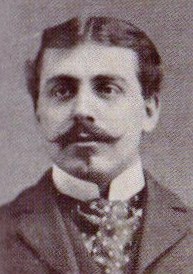Raoul Barré (Raoul Barré)

Pioneer Cartoonist. Born Vital Achille Raoul Barré in Montreal, Quebec, he went to Paris in 1891 to study at the School of Fine Arts and remained there for several years as a political cartoonist. His attacks of the French military over the Dreyfus affair (1898) proved too controversial and he returned home soon afterwards. In 1902 he created the first French-Canadian comic strip, “For a Christmas Dinner”, and while it was not intended as an ongoing feature (the story was wrapped up in eight episodes) it inspired other local cartoonists to try their hand at the new medium. The following year Barré moved to New York City to work as a commercial illustrator while drawing two comic strips for Montreal papers, “The Adventures of Timothy (1904 to 1909) and “Father Ladebauche” (1904 to 1909). His strip “Noah’s Ark” (1912 to 1913) was syndicated in both the United States and Canada. Like a number of newspaper artists of his time, Barré was intrigued by the experiments of Frenchman Emil Cohl and American Winsor McCay in early animated cartoons. In 1912 he offered his services to the Edison studio and turned out several promotional shorts that may have marked the earliest use of animation in advertising. Along with his collaborator in that venture, Bill Nolan, he founded the Barré Studio in The Bronx in 1914. This was the world’s first professional animation studio, and Barré and Nolan developed many techniques to streamline production and improve the quality of their output. Among them were the “peg system”, the first reliable method of photographing drawings in perfect alignment; the “slash system”, a labor-saving device in which drawings were cut (“slashed”) so that stationary figures would not have to be re-traced along with the animated ones; and the moving background, photographed beneath the action, which created the illusion of horizontal or vertical movement even though the characters were walking in place. The cartoons they produced include the series “Animated Grouch Chaser” and “The Boob Weekly”, the latter written by Rube Goldberg. In 1916 newspaper baron William Randolph Hearst started the rival International Film Service and hired away most of Barré’s staff, including Nolan. Barré accepted some Hearst assignments as an independent contractor and then formed a new partnership with cartoonist Charles Bowers, producing shorts based on Bud Fisher’s popular comic strip “Mutt and Jeff”. Although only Fisher’s name appeared on the credits, his involvement was purely financial. To get the films out Barré trained a new group of enthusiastic young artists, some of whom – Walter Lantz, Bill Tytla, Frank Moser, Dick Huemer – later became legends in their field. But there was friction between him, Bowers and Fisher, and Barré abruptly quit in 1918. The Barré Studio continued without its namesake until 1923. After working for an advertising agency, he resurfaced in 1926 as an animator on Pat Sullivan’s “Felix the Cat” cartoons. “He was a genius in animation”, series director Otto Messmer recalled. “It was a thrill to have this man work with me on ‘Felix’. He had a great flair for gags and tricky effects which enriched the stories I outlined…” This lasted about two years before Barré gave up animation for good and settled in Montreal. In his last years he was active mainly as a painter, though he revived his skills as an editorial cartoonist to aid the political career of his son-in-law, Gaspard Fauteux, a future Lieutenant Governor of Quebec. He died of cancer. It was not until the early 1970s that his groundbreaking contributions to animation began to be acknowledged by historians. (bio by: Bobb Edwards)
Born
- January, 29, 1874
- Canada
Died
- May, 05, 1932
- Canada
Cemetery
- Notre-Dame-des-Neiges Cemetery
- Quebec
- Canada

